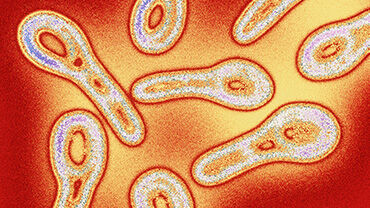European Diphtheria Surveillance Network (EDSN)
About the network
The European Diphtheria Surveillance Network (EDSN) consists of operational contact points for diphtheria surveillance (epidemiological and microbiological) nominated by the Coordinating Competent Bodies for surveillance of the Member States. Epidemiological and microbiological surveillance data on diphtheria are collected through the European Surveillance System (TESSy).
Specific objectives of diphtheria surveillance
- To estimate the incidence of the diphtheria diseases in Europe by Member State, age and gender.
- To monitor and assess diphtheria disease trends (C. diphtheriae, C. ulcerans, C. pseudotuberculosis) and strain distribution over time in Europe.
- To monitor case-fatality.
- To monitor the population susceptibility by vaccination status of cases.
- To improve the quality, timeliness and comparability of available data.
- To promote early detection and control.
- To support specialised studies, including screening in specific population groups (e.g. occupational health).
- To promote and maintain knowledge, expertise and capacity at the Member State level.
- To encourage integration of laboratory and epidemiology activities.
- To promote the improvement of a laboratory network for disease, including quality assurance and molecular typing.
- To promote standardisation and quality assurance of laboratory methods, including molecular epidemiological typing and serological studies.
- To promote serological studies conducted in collaboration between epidemiologists and microbiologists.
- To support training for microbiologists and public health experts in disease surveillance methods.
Frequency of reporting
Case based data are encouraged to be reported in real time, while zero reporting is done once a year.
History
During the re-emergence of diphtheria to epidemic levels in the Russian Federation and Newly Independent States (NIS) in the 1990s, the European Laboratory Working Group on Diphtheria (ELWGD) was formed in July 1993 upon a request of WHO Regional Office for Europe (WHO/Europe).
In 2001, the network was expanded through a feasibility study funded by DG SANCO (now DG SANTE). Based on the results of this study the European Diphtheria Surveillance Network (at the time called DIPNET) was established in November 2006 and was recognised as a Dedicated Surveillance Network (DSN) by the European Commission (EC).
The hub for the coordination of the network was located at the Health Protection Agency (HPA), (now Public Health England), in London. HPA also served as the WHO Collaborating Centre for Diphtheria. The 38-month grant agreement with DG SANCO started 1 November 2006 and ended 31 January 2010.
The main purpose of DIPNET was "to establish a network of expertise for the prevention of diphtheria and other related infections" across the EU Member States and beyond. The network had both epidemiological and laboratory components. The epidemiological activities focused on the collection and analysis of data on diphtheria cases caused by either Corynebacterium diphtheriae or Corynebacterium ulcerans. The laboratory activities focused on trainings and external quality assessment (EQA), aiming at strengthening the laboratory capacity in MS to accurately characterize the isolates of C. diphtheriae and C. ulcerans, and to develop novel tools for molecular characterisation of C. diphtheriae. An evaluation and assessment of the network was performed in January 2009. This was done to ensure that objective and reliable information was available for making decisions on which surveillance activities and functions should be continued at the EU level, which ones should be omitted, and which added/modified, and finally where these activities/functions should take place.
In February 2010, at the end of the former grant agreement with DG SANCO, the responsibility for the activities of DIPNET was transferred to ECDC and renamed the European Diphtheria Surveillance Network.
Between 2010 and 2014 the implementation of the laboratory surveillance for diphtheria was managed by outsourcing the coordination of the activities which focused on EQAs and training workshops.
The key objectives of the outsourced activities were:
- To coordinate the European laboratory network on diphtheria, which was part of the broader EU surveillance system for diphtheria with both epidemiological and laboratory components that were built up and coordinated by ECDC.
- To assess and improve laboratory performance for standardised and appropriate methods to be used for the laboratory diagnosis of culture-confirmed diphtheria infections for ensuring accurate and comparative diphtheria surveillance across Europe.
Activities
Current activities in the area of diphtheria include surveillance and training. A Gap analysis on securing diphtheria diagnostic capacity and diphtheria antitoxin availability in the EU/EEA was undertaken and then published by ECDC in 2017.




